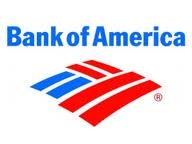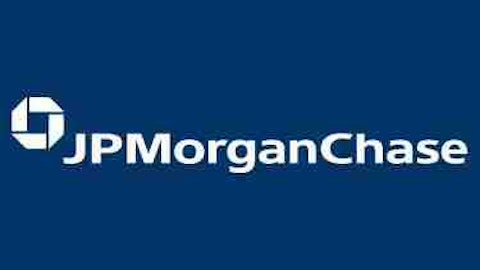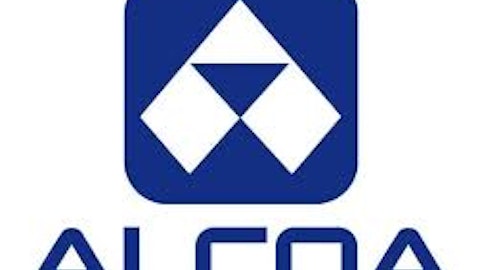It’s no secret that the nation’s second largest bank by assets, Bank of America Corp (NYSE:BAC), has its fair share of problems.
Since the financial crisis, its earnings have been ravaged by the bank’s decision to double down on the subprime mortgage market on the eve of the financial crisis. Hardly a month goes by nowadays that it isn’t sued for some type of malfeasance.
But these problems are isolated. Have they been expensive to deal with? Sure. But there’s a light at the end of the tunnel, and that light is getting bigger and brighter with each passing day.

The more concerning issue for prospective long-term investors is its net interest margin, as this is indicative of a systematic failure on the part of the management. Unlike the lawsuits and regulatory actions dating back to the financial crisis, there isn’t a natural ending point to this.
It’s important, here, to clearly understand what a bank does.
In short, a bank is not a bank — or, at least not in the traditional, conservative sense that most of us associate with one. It’s better to think of a bank as a hedge fund — albeit a heavily regulated one.
Banks make money by heaping copious amounts of debt onto a comparatively small kernel of capital — that is, leveraging — and then investing the borrowed funds into interest-earning assets — the most common and highest yielding of which are loans.
This is where the net interest margin comes in. Net interest margin is calculated by dividing the difference between investment returns and interest expenses by the quantity of earning assets.
Because the objective is to maximize the quotient, we can draw a number of general rules from its component pieces.
In the first case, banks want to maximize their investment return. This is accomplished by (1) maximizing the proportion of earning assets to total assets and (2) getting a higher yield on those assets.
To do the latter, moreover, it’s generally necessary to maximize the proportion of loans (that are higher yielding) to other types of assets like, say, high-grade investment securities.
And in the second case, banks want to minimize their interest expense. They typically do this by using deposits — and so-called “demand” deposits like checking accounts in particular — to finance their investments as opposed to credit lines from other financial institutions.
So, how does Bank of America Corp (NYSE:BAC) match up?
Let’s start with its net interest margin overall. In 2012, this came in at 2.34%. By comparison, the average of the nation’s 12 largest banks (excluding investment and custodial banks) was 3.33%, or nearly 100 basis points higher.
The best performer in this regard was Pittsburgh-based PNC Financial Services (NYSE:PNC), which recorded a net interest margin of 3.94%. And this is despite the fact that PNC Financial Services (NYSE:PNC) has more than doubled in size over the last five years thanks to its acquisition of National City Corp in 2008.
Taking a step down, Bank of America Corp (NYSE:BAC) performs almost as poorly when it comes to its ratio of earning assets to total assets. In 2012, its ratio was 80%, behind only JPMorgan Chase & Co. (NYSE:JPM)‘s 78%. The average among their peers was 85%. In other words, both of these institutions carried significantly more dead weight on their balance sheets (typically in the form of intangible assets) than their average competitor.
And the same can be said for Bank of America Corp (NYSE:BAC)’s yield on earning assets, which, at 3.28%, was again behind only JPMorgan Chase & Co. (NYSE:JPM)’s 3.08%. The best performer in this regard was the mid-Atlantic regional lender BB&T Corporation (NYSE:BBT), which recorded an average yield of 4.61%.
Why did it come up so short in this regard? As I noted above, it has to do with Bank of America Corp (NYSE:BAC)’s ratio of loans to total assets. While only 41% of its assets consisted of loans, BB&T Corporation (NYSE:BBT)’s ratio was 62% — thus explaining the gap in the earning-asset yields.
Finally, while Bank of America unquestionably has one of the best deposit franchises in the United States, its cost of funds nevertheless came in at 0.95% for the 12 months ended December 31. That was behind only Citigroup Inc. (NYSE:C)‘s 1.45%, which operates much more like an investment bank than a traditional bank when it comes to funding.
The issue here is twofold. Even though Bank of America has a massive amount of deposits, they still only make up 56% of its total funds. By comparison, the average among the largest lenders is 80%. In addition, only 34% of its deposits are demand deposits; the remainder consists of more expensive certificates of deposits and money market accounts, among other things.
Once you take all of these things into consideration, in turn, it becomes exceedingly obvious that Bank of America has more than just financial-crisis related problems to deal with over the foreseeable future. Will it be able to do so and reward investors at the same time? While I believe it will, the proof will nevertheless be in the pudding.
The article 1 Place Where Bank of America Comes Up Woefully Short originally appeared on Fool.com and is written by John Maxfield.
John Maxfield owns shares of Bank of America. The Motley Fool recommends Bank of America. The Motley Fool owns shares of Bank of America, Citigroup, JPMorgan Chase, and PNC Financial Services (NYSE:PNC).
Copyright © 1995 – 2013 The Motley Fool, LLC. All rights reserved. The Motley Fool has a disclosure policy.







